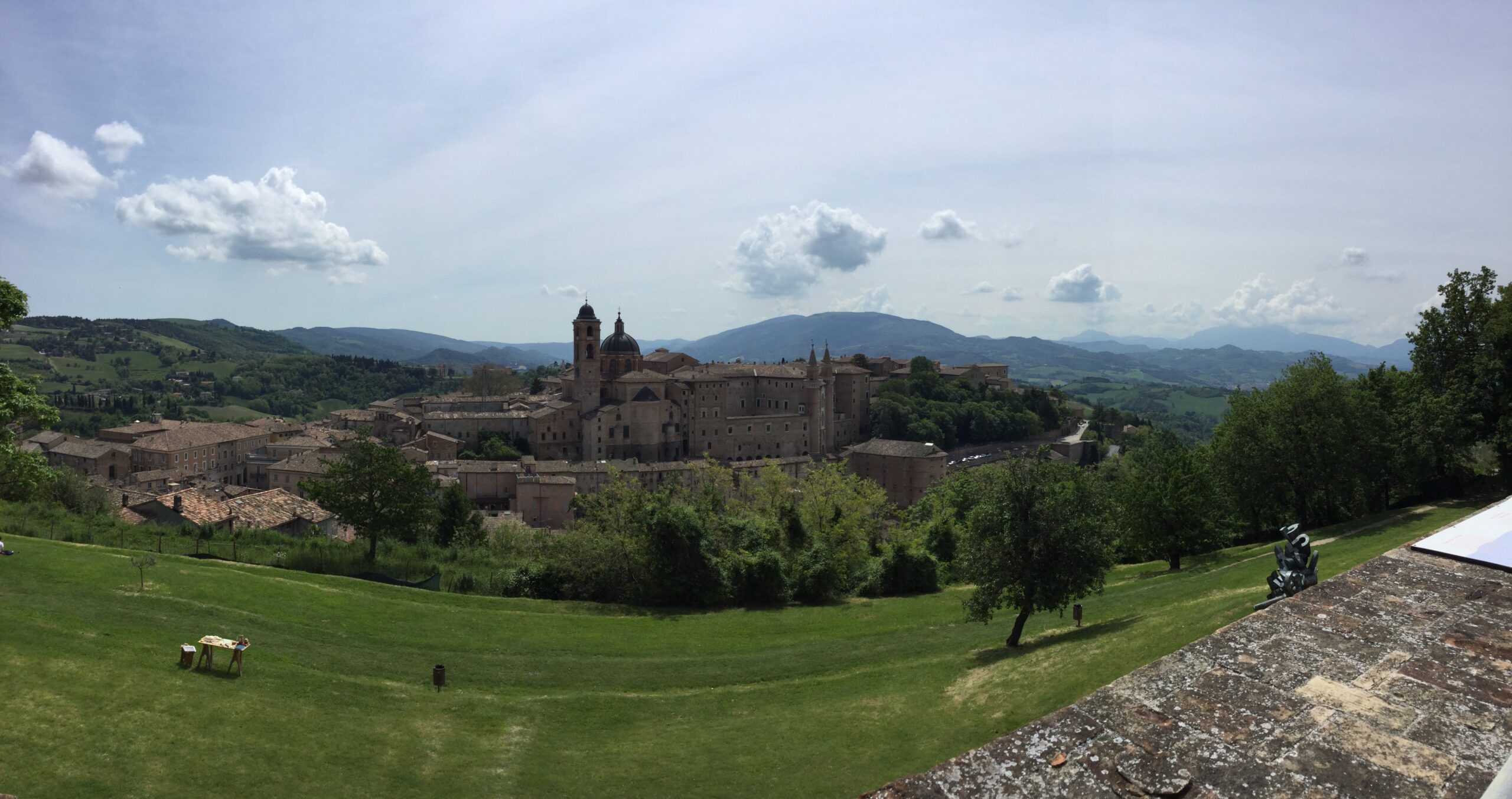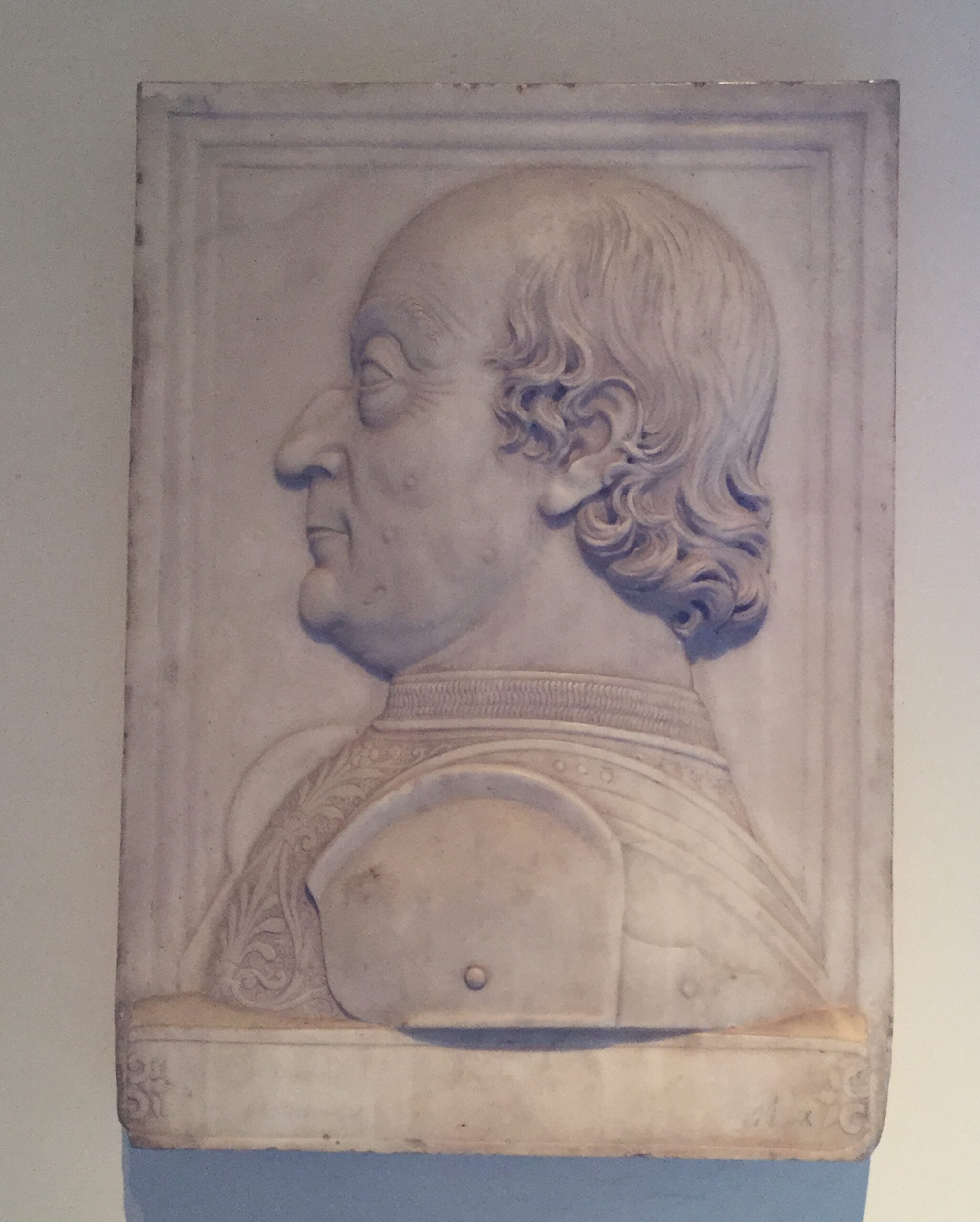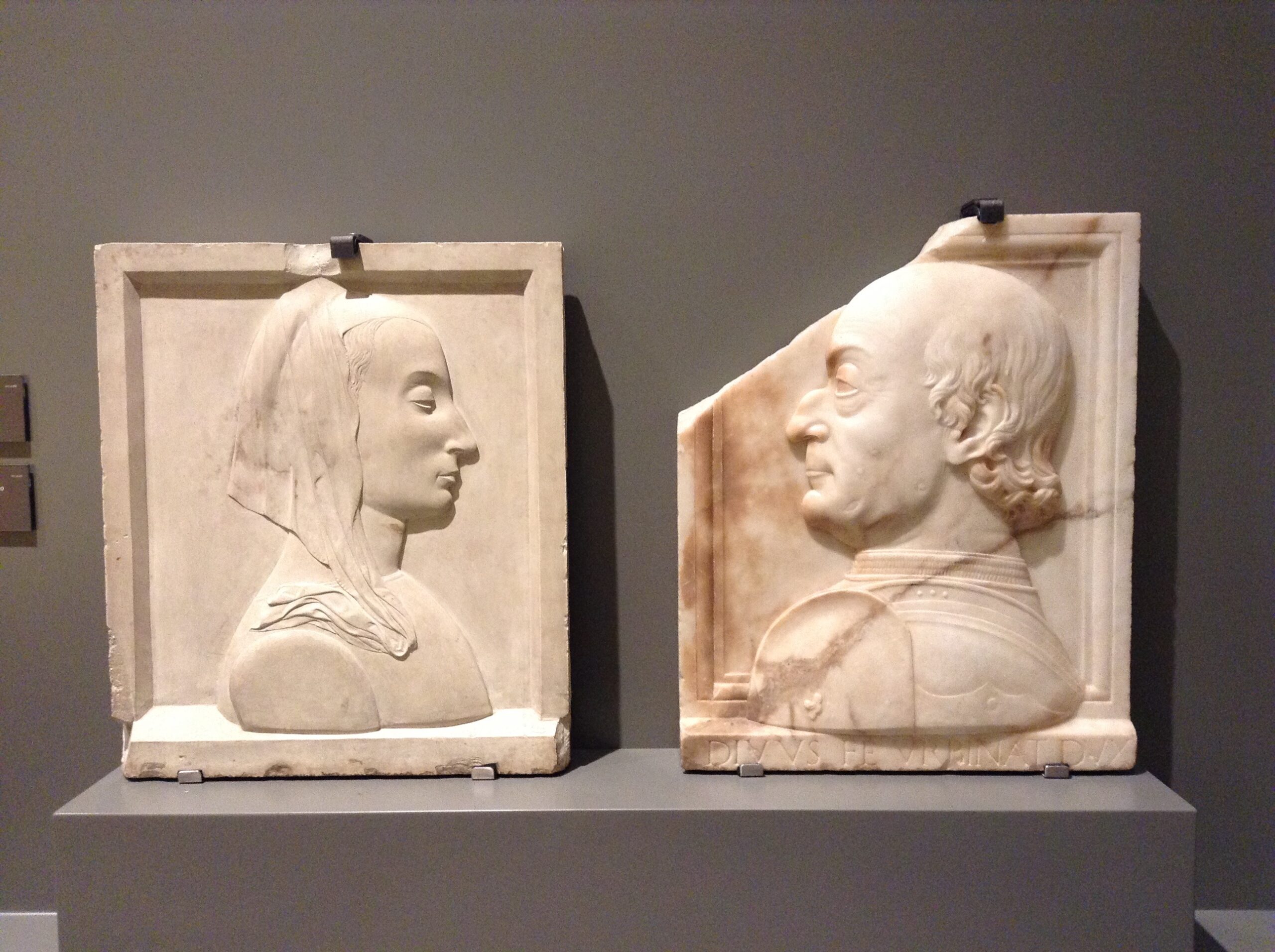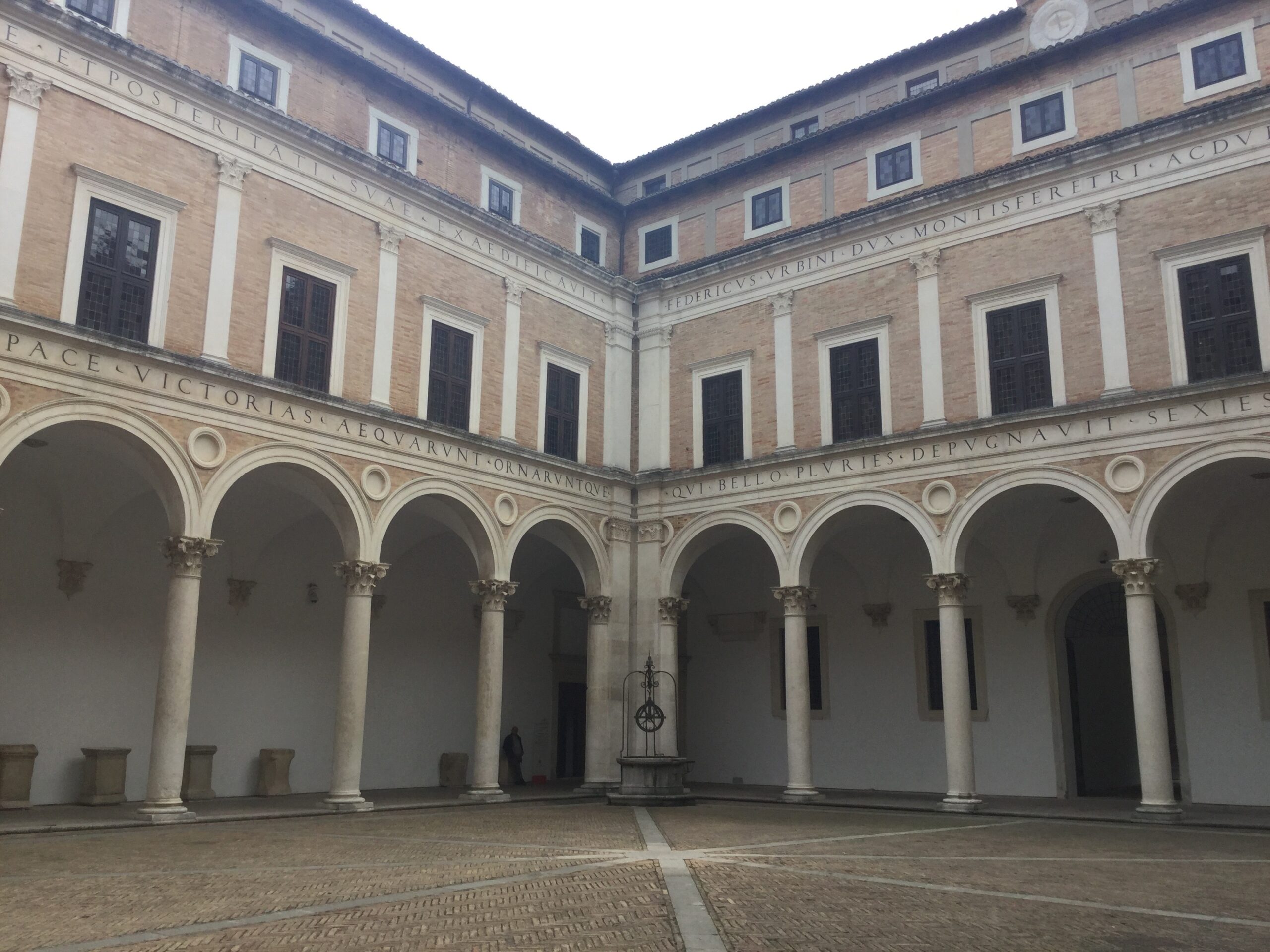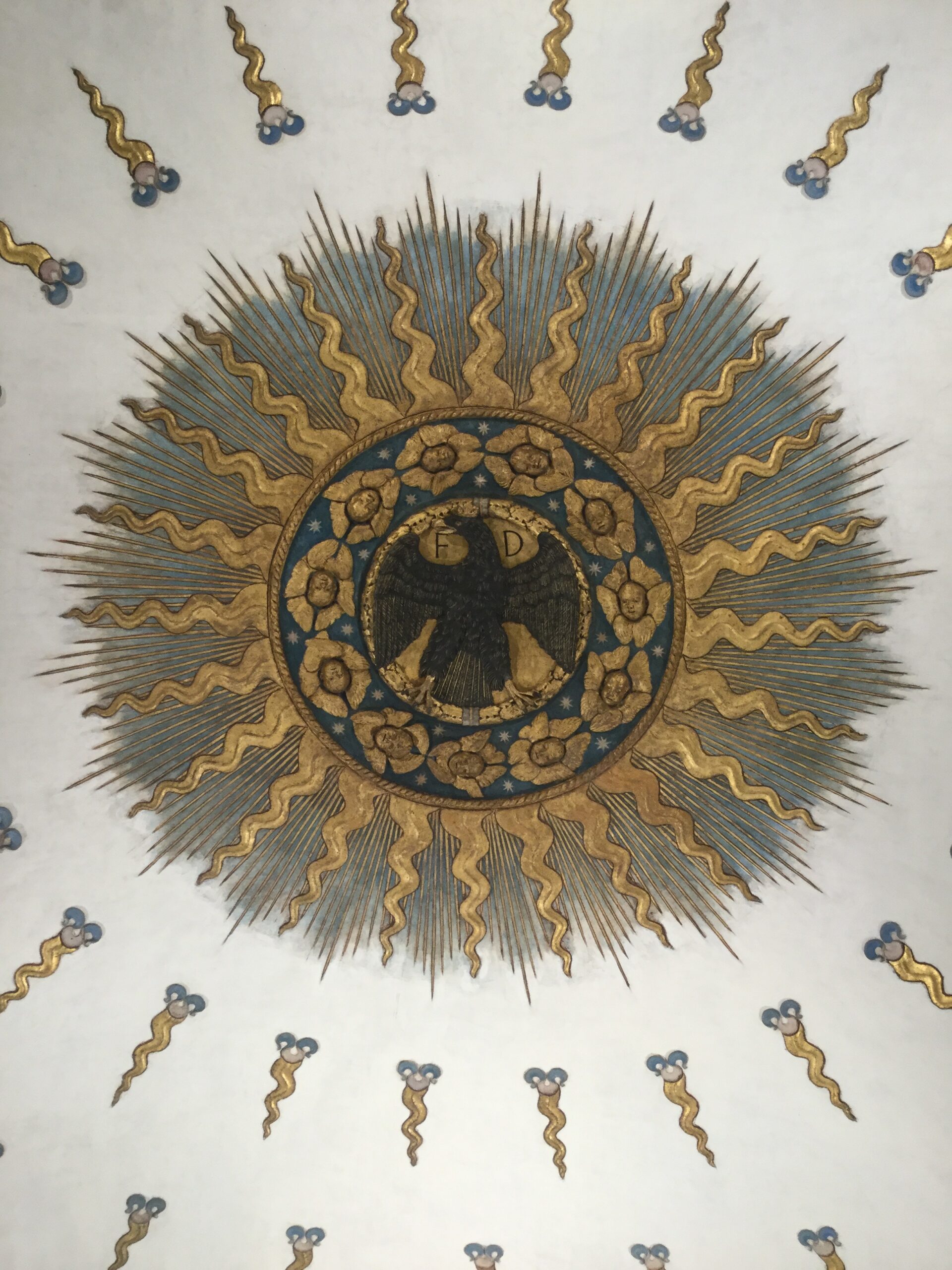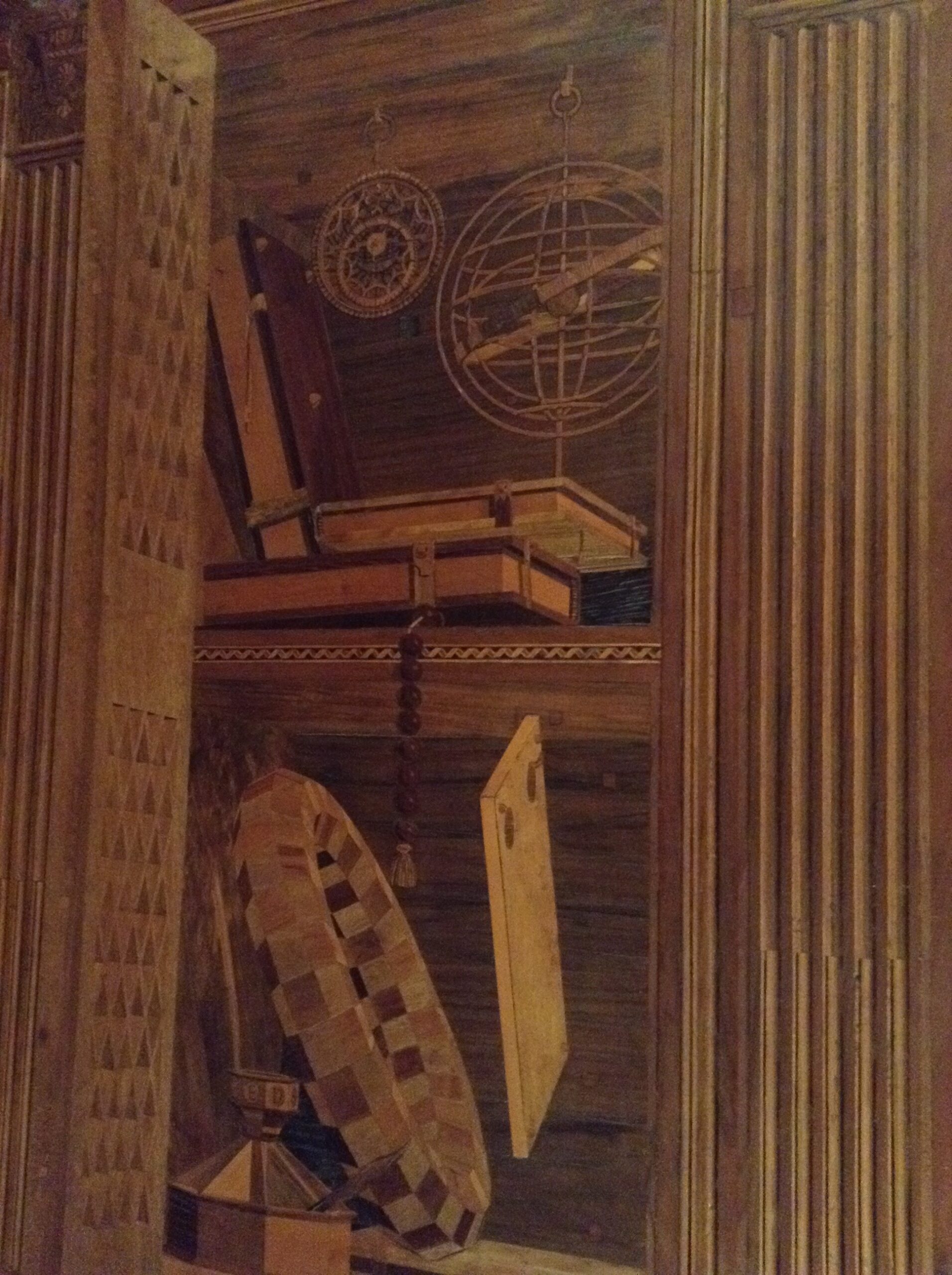Happy Birthday Federico da Montefeltro! The Count and then Duke of the Montefeltro region was born on June 7, 1422 in the town of Gubbio. Over the course of his life the Montefeltro region (which includes parts of Umbria, the Marche, and the Emilia-Romagna) became a center of culture. Although born illegitimate, Federico received his humanist education in Mantua alongside the sons of other powerful ruling families
In July 1444, Federico seized power in the region when he orchestrated the assassination of his half-brother. This action, along with two strategic marriages and his success as a condottiere, helped him to expand his regional holdings and networks of contact. He was closely with allied with the ruling families in Naples, Milan, as well as with Pope Pius II.
His first marriage to Gentile Brancaleoni did not result in children but the marriage negotiations brought large areas of land along the Metauro river basin in the northwest corner of the Marche under Montefeltro control. His second marriage to Battista Sforza solidified his ties with Alessandro Sforza, the regional Sforza ruler in Pesaro, and to Duke Francesco in Milan. After the premature death of her mother, Costanza, Battista was sent to the Sforza court in Milan to be educated under the watchful eye of Bianca Maria Visconti whose investment in Battista continued even after the young girl returned to the Marche region.
The salary Federico earned as a mercenary warrior funded an expansive patronage program that celebrate his military prowess, piety, and humanist interests. The physical fabric of Urbino was transformed when he commissioned a series of architects, including Luciano Laurana and Francesco di Giorgio Martini, to build the Palazzo Ducale. Rising from the main road into town, the palace, with its characteristic pair of tall, narrow towers, offers a synthesis of architectural forms including a reference to a Roman triumphal arch and to the towers of a French royal palace. At the heart of the palace is one of Federico’s two intarsia studioli. Inlaid wood panels fill the lower register; books, mathematical tools, musical instruments, and armor spill out of drawers or sit, as if recently discarded, on the illusionistic benches around the perimeter. Above are portraits of Uomini Illustri all engaged in animated discussion about the books or texts that they hold. The figures, including contemporaries and historical figures, also authored some of the 1,100 illuminated manuscripts filling Federico’s library suite located off the main courtyard of the palace.
Reference: Hollingsworth, Mary. “Art Patronage in Renaissance Urbino, Pesaro, and Rimini c.1400-1550.” The Court Cities of Northern Italy: Milan, Parma, Piacenza, Mantua, Ferrara, Bologna, Urbino, Pesaro, and Rimini. New York and Cambridge: Cambridge University Press, 2010: 325-368.
Image credits (Jennifer D. Webb)
Battista Sforza and Federico da Montefeltro (Pesaro, Museo Civico)
View of Urbino
Gian Cristoforo Romano, Federico da Montefeltro (Florence, Bargello)
Montefeltro crest, Library, Palazzo Ducale, Urbino
Detail from studiolo, Palazzo Ducale, Urbino
View from the balcony of the Palazzo Ducale, Urbino
Further reading: Marcello Simonetta, ed. Federico da Montefeltro and his Library. Y. Press, 2007; Maria Grazia Pernis and Laurie Schneider Adams. Federico da Montefeltro and Sigismondo Malatesta: The Eagle and the Elephant. New York: Peter Lang, 2003.

